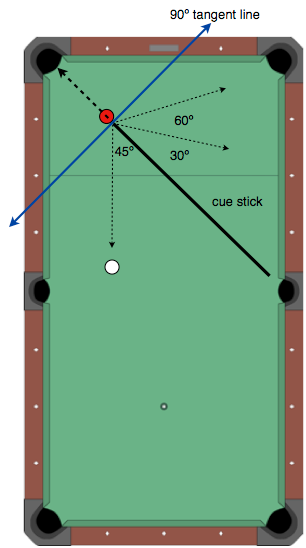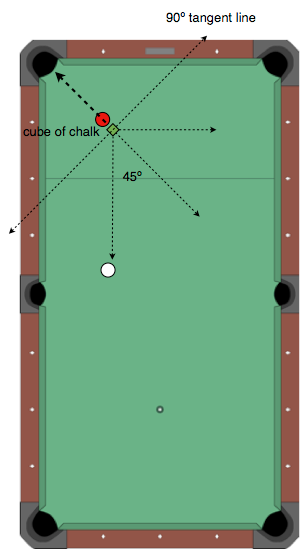Here is a simple system I use for estimating the shot angle. Angles are good to know when you need to determine your shot with a fractional aiming system, a pivot aiming system, or any other use you may have. I give two different methods below. One of them requires no more than your cue stick, and the other a cube of chalk.
Method 1: Lay you cue stick on the table in line with the object ball and the pocket, with the tip on the ghost ball spot. From here you can imagine the tangent line, or the line perpendicular to the shot line. This is 90 degrees. Now cut that angle in half, and you have 45 degrees. Likewise, you can cut that angle into thirds for the 30 and 60 degree cuts. From there, you can accurately estimate what cut angle your shot is within a segment. See the diagram:
 You can see in the above example that our cue ball is right on a 45 degree cut.
You can see in the above example that our cue ball is right on a 45 degree cut.
Method 2: Take a cube of chalk and set it right on the ghost ball spot, with a face perfectly in line with the pocket. Now the sides of the chalk cube indicate the 90 degree tangent line, and the corners of the chalk cube indicate the 45 degree cut angles. See the diagram:
 Thats it! Now you know how to quickly and accurately determine your shot angle within a few degrees.
Thats it! Now you know how to quickly and accurately determine your shot angle within a few degrees.
